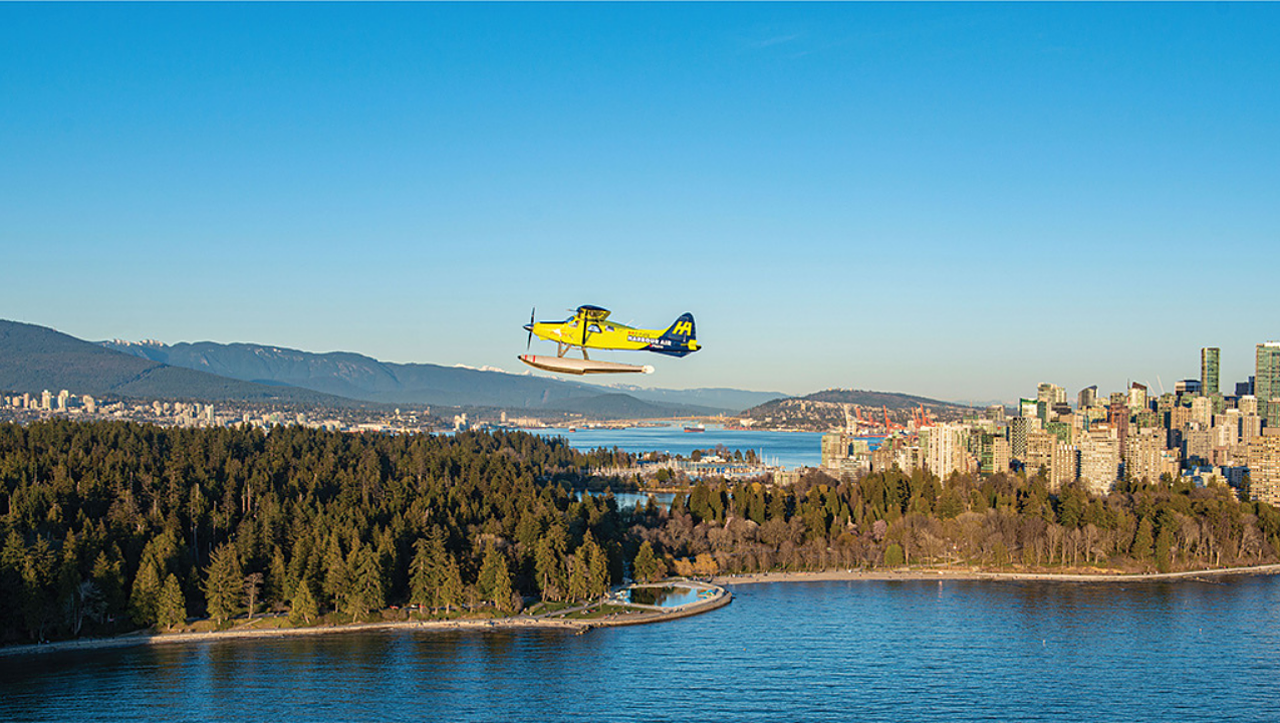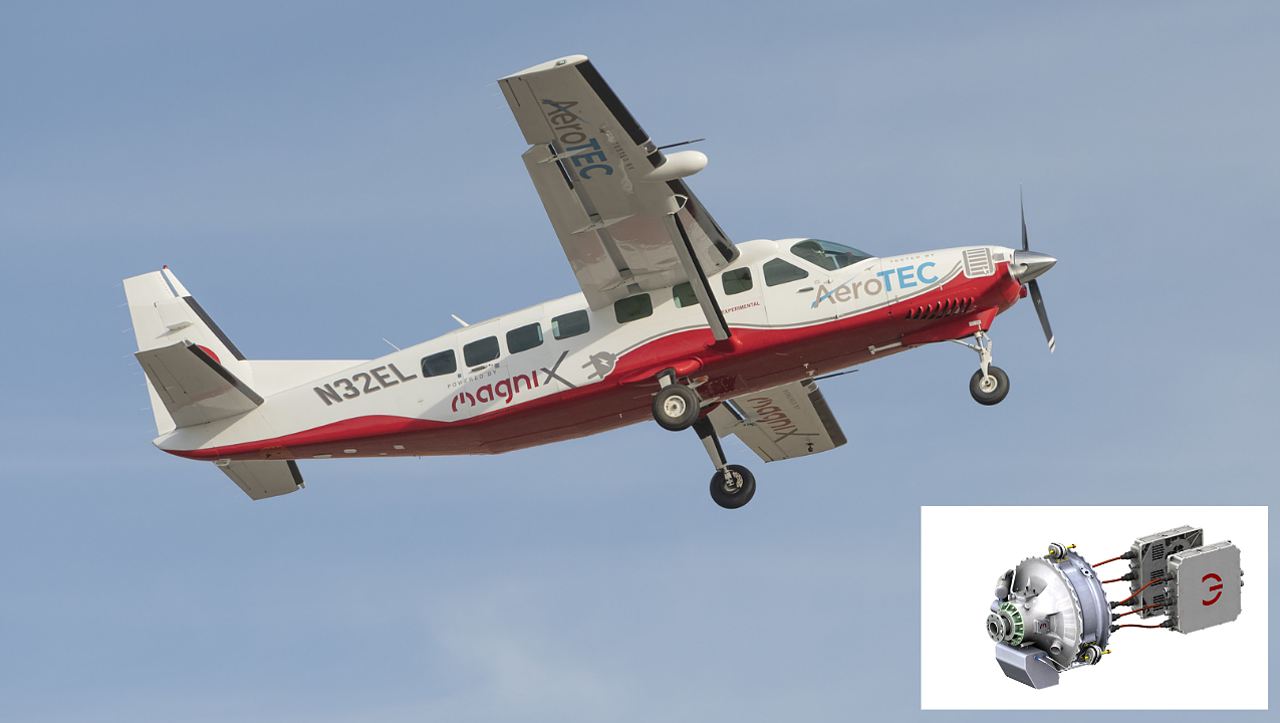
The development of electric commercial aircraft, which is already proceeding rapidly, could be further accelerated with recent development programmes to convert existing light aircraft with hybrid-electric and all-electric powerplants.
US operator Surf Air Mobility (SAM) and Textron are working together to develop an electrified Cessna Grand Caravan aircraft powered by the former’s proprietary powertrain technology. In July, SAM placed orders with Textron Aviation for 150 Cessna Grand Caravan EX single-engine aircraft (150 firm orders and 50 options). “Hybrid electric propulsion technology, deployed at scale for environmental and commercial benefits, is an important part of the future of travel,” said Ron Draper, President & CEO, Textron Aviation.
In another important development, Harbour Air, North America’s largest seaplane operator, announced in April that it is working with its partners to certify the world’s first electric Beaver (eBeaver) seaplane commuter aircraft through a Supplemental Type Certificate (STC) programme. The eBeaver made its first flight in 2019 and will feature an electric propulsion unit from magniX along with an enhanced battery system from H55 (a spin-off from Solar Impulse). Completion of development of the eBeaver is targeted for 2022.
Potential energy
These developments are also relevant to India (albeit in the medium term) as the robust and reliable Cessna Grand Caravan is popular with commercial operators in the country for passenger, cargo transport and air ambulance roles. The hybrid-electric Cessna Grand Caravan currently under development will deliver similar performance as the current turbine engine Grand Caravan aircraft used for similar roles carrying passengers and cargo. Using hybrid-electric propulsion instead of fossil-fuel-powered engines for short-haul direct service aircraft will significantly benefit operating costs and carbon emissions reduced by an estimated 25%.
Seaplane services are also just taking off in India, with the Ministry of Civil Aviation and Ministry of Ports, Shipping and Waterways inking a Memorandum of Understanding in June for nationwide development of seaplane services. The government aims to boost tourism while promoting eco-friendly transportation through seaplanes, and the recent MoU will expedite the development of new water aerodromes and the operationalisation of new seaplane routes in India.
Old aircraft new propulsion
SAM will start receiving Grand Caravan deliveries in Q2FY22 and start integration work of the hybrid-electric system. The goal is to certify a nine-seater variant that could be available by 2024. “The Cessna Grand Caravan EX is one of the most adaptable and prolific aircraft in flight today.
“Through this exclusive relationship with Textron Aviation, we’re able to make electrified aircraft broadly available to existing and new operators and bring the benefits of lower cost, lower emission air travel to customers faster and at scale,” said Sudhin Shahani, Co-founder, CEO & Executive Chairman, SAM. The company plans to use the aircraft across its network, as the new series hybrid propulsion architecture will not require charging stations, allowing it to be immediately operable at over 5,000 public-use airports across the US.

Powered by a 750 HP (560 kW) magni500 propulsion system, the first successful flight of an all-electric Cessna Grand Caravan 208B took place in May. “This first flight of the eCaravan is yet another step on the road to operating these middle-mile aircraft at a fraction of the cost, with zero emissions, from and to smaller airports. These electric commercial aircraft will enable the offering of flying services of people and packages in a way previously not possible,” said Roei Ganzarski, CEO of magic. Once proven and certified, the eCaravan will pave the way for additional aircraft conversions with magniX’s all-electric propulsion technology.
Harbour Air, magniX and H55 are working together to certify the eBeaver from Transport Canada. Since its maiden flight in 2019, work has been ongoing on eBeaver to measure and collect data on cruise performance, take-off thrust efficiency, Electro-Magnetic Interference (EMI), battery management software logic, noise levels, etc. H55’s proven modular battery technology features modules with one of the highest energy densities on the market, which will expand the eBeaver’s balance to weight ratio and endurance. H55 will provide the entire energy storage system and redundant battery monitoring at the cell level. “This partnership is another step forward in our vision of making emission-free, all-electric aircraft a reality,” said Roei Ganzarski, CEO of magic. “With Harbour Air leading the way to become an all-electric airline, H55’s battery technology and magniX’s flight-proven propulsion, we are looking at an electrifying future.”
Powering the future
In June, magniX unveiled its new magni350 and magni650 Electric Propulsion Units (EPU), which are expected to open up real-world commercial aviation applications and accelerate the path to certification for electric aircraft. The magni350 is a 450 SHP-/350kW-/1,600 Nm Class EPU, while the larger magni650 delivers 850 SHP-/650kW-/3,200 Nm. Both CPUs utilise the new high-performance magniDrive-100, 170kW inverter/motor controller power electronics unit and share a common core architecture. A propeller governor and standard aircraft accessories can all be driven from the front cone of each motor by both systems. The liquid-cooled direct-drive CPUs operate at 2,300 RPM or less and are designed for operations at altitudes of 30,000 feet in unpressurised environments. magniX says that its experience in the past few years, powering commercial-grade electric aircraft such as the Beaver and the eCaravan, have helped it deliver a series of enhanced features resulting in simplicity and reliability on the new magni350 and magni650 CPUs.